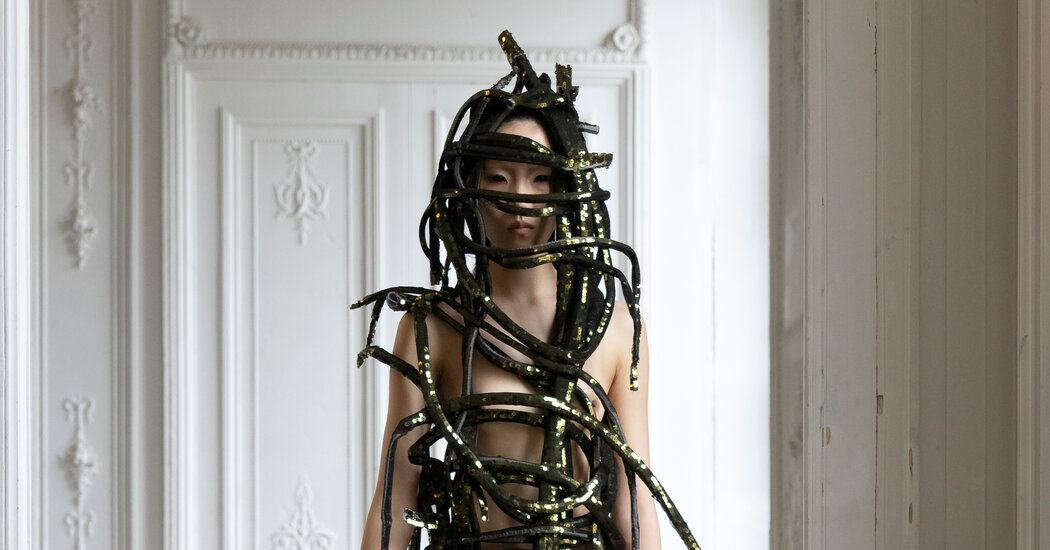
Do designers really expect us to wear those outlandish looks they show on the runway? I look at the images and can’t imagine anyone walking down a street in most of those clothes, no matter where they lived. — Mary, Auckland, New Zealand
This is one of those questions I have been asked pretty much every season since I started covering the runway shows. Another one is about why models never smile, which I answered last season, and I get it, I really do. From afar, many styles that appear on designer catwalks can seem more like souvenirs from a trip to an alternate dimension in the Tardis in “Doctor Who” than actual clothes.
There are, of course, some brands, like Max Mara and Dries Van Noten, that feel an almost moral compulsion to be able to sell what they make. Ditto Rick Owens, the designer of the somewhat extreme fall look above — but he has a committed fan base that sees itself in his otherworldly aliens and embraces the idea of announcing that to the world. (As does Mr. Owens himself, who told me backstage he had figured out a way to produce and sell the ropy looks.)
Remember that just because you don’t want to look like a paramecium does not mean there isn’t someone in the world who sees such an outfit and thinks, “YES!”
It is also true that for many designers the runway is the only opportunity they have to show their ideas to the world in their purest state — not through the filter of magazine stylists or celebrity desires or retail choices — and they have only about 10 minutes to do so. That means that those ideas have to read quickly and clearly, and often the fastest way to get an idea across is by exaggerating it. This has become more imperative in the age of social media, when ideas are being conveyed not just to the people in the room, but also to anyone watching a livestream on a very tiny screen.






